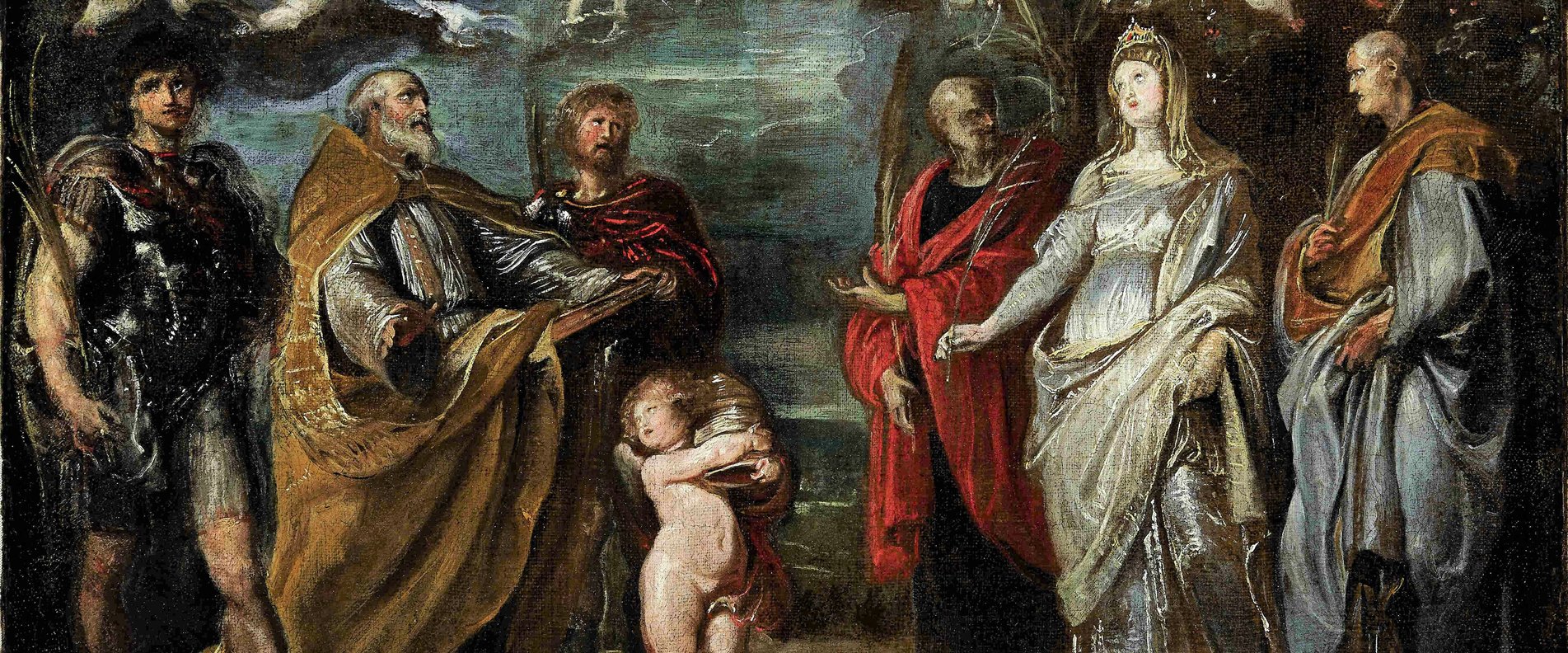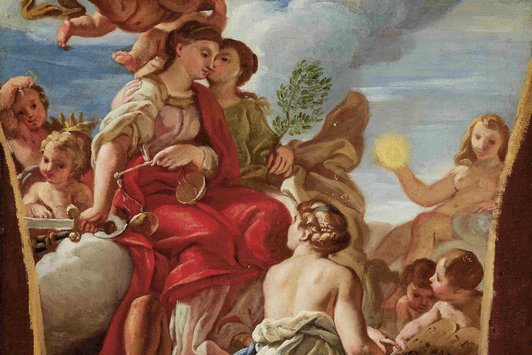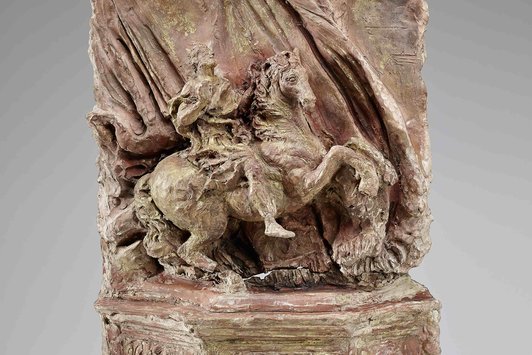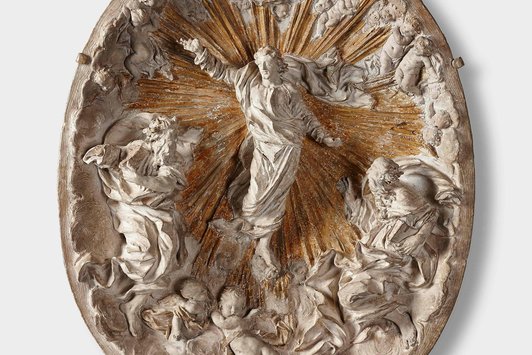Roman Baroque from the Rossacher Collection
CURRENT INFORMATION ABOUT CORONAVIRUS (SARS-COV-2)
The DomQuartier Salzburg is closed. According to the current state of knowledge, this measure will continue until April 3, 2020.
This includes that all events are canceled during this period.
For further information, please click here.
Rome is considered the birthplace of the Baroque period. The important Rossacher Collection in the Salzburg Museum contains designs that were to become key works of this epoch of art. Works by Gianlorenzo Bernini and his studio are represented as well as by his competitor Alessandro Algardi. A design for the high altar of Chiesa Nuova by Peter Paul Rubens shows his most important Roman commission. This is also an eloquent example of the collaboration between artist and client.
The drafts are accompanied by large photographs of the work executions. They complete the picture of Baroque Rome in the northern oratory of Salzburg Cathedral.
Kurt Rossacher (1918-1988) collected sketches - oil sketches, sculptor's bozzetti and drawings - of European art of the 17th and 18th centuries. Initially, the artistic quality of the works was more important to him than certain art landscapes or artist names. Nevertheless, his collection contains sufficient preparatory work for important art projects in the city of Rome. Gianlorenzo Bernini and Pietro da Cortona are among the most important representatives in this context. For Peter Paul Rubens, a commission in Rome was of particular value for his further career.
The concentration on examples of Roman art is coordinated with the theme of the upcoming exhibition in the rooms of the Residenzgalerie. The show "Golden Times. Dutch Painting of the 17th Century" with masterpieces from the collections of the Residenzgalerie Salzburg and the Gemäldegalerie der Akademie der bildenden Künste Vienna will open on 3 August.
The DomQuartier Salzburg thus presents two special shows that take up the core theme of the house, the Baroque. They are thematically connected and enter into an attractive dialogue with each other.
The walk through the Residenzgalerie across the Dombogenterrasse into the northern Oratory of Salzburg Cathedral becomes an exciting expedition through the Baroque period with its manifold facets, forms of expression, traditions, but also differences: On the one hand, the Catholic art with clergy and nobility as clients, on the other hand, the Protestant northern Netherlands with its republican form of government. Here the artists created a unique constellation for a growing middle class and an established art market that would change the visual language and function of art.
Rome
Rome has been the religious and cultural centre of Europe for centuries. Since the Renaissance, the popes have sought to make Rome the most brilliant city in Christendom. This included urban planning with new streets, with lines of sight on palaces and squares with fountains and obelisks.
Rome is considered the birthplace of the Baroque period. It was the last art movement to spread throughout Europe - and beyond to South America. He was to be powerful, classic and impressive - and an eloquent ambassador of Catholicism.
Since the Council of Trent, the Catholic Church had a new self-confidence. The Counter-Reformation was driven forward above all by art. In 1626 the new St Peter's Basilica was consecrated. The city was decorated with churches, fountains, squares, palaces and villas. Art became an instrument of grand self-dramatization.
Pope Urban VIII. (1568-1644) and the sculptor, later also architect, Gianlorenzo Bernini, were a congenial couple in this respect. Urban's successor, Innocent X (1644-1655), preferred Alessandro Algardi as sculptor. Bernini temporarily lost all public commissions - until the Pope saw his design for the Four Streams Fountain in Piazza Navona!
Rome was also an attraction for artists from all over Europe. Here they could study ancient and modern monuments in one place. From here they brought a new style of art - the Baroque - back to their homeland.
From Bernini to Rubens
Gianlorenzo Bernini and his competitor Alessandro Algardi are the outstanding protagonists of Roman Baroque sculpture. The painting is in the exhibition by Bernini's friend Giovanni Battista Gaulli, gen. Il Baciccio, and Pietro da Cortona. Peter Paul Rubens is regarded as the great mediator of Italian art in the north. Anton Raphael Mengs marks the end of the baroque art movement.
Works by Mariano Rossi, Domenico Corvi and Benedetto Luti are also on display.
"A design represents a project in the full audacity of the creative imagination.
Kurt Rossacher
Contact & Arrival
-
Residenzplatz 1/Domplatz 1a
-
-
-
-
Mon, Wed - Sun 10:00-17:00





